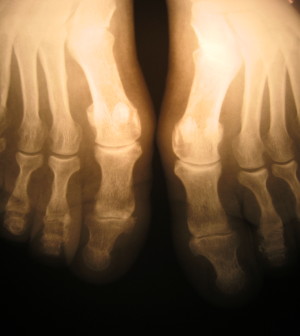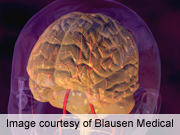- Skip Storing This Everyday Product in the Fridge Door
- Green Tea + B3 Pairing May Boost Brain Health
- Navigating Your Midlife Crisis: Embracing New Possibilities
- City Raccoons Showing Signs of Domestication
- Mapping the Exposome: Science Broadens Focus to Environmental Disease Triggers
- One Week Less on Social Media Linked to Better Mental Health
- Your Brain Changes in Stages as You Age, Study Finds
- Some Suicide Victims Show No Typical Warning Signs, Study Finds
- ByHeart Formula Faces Lawsuits After Babies Sickened With Botulism
- Switch to Vegan Diet Could Cut Your Greenhouse Gas Emissions in Half
Your Brain Structure Might Influence Pain Tolerance


Your brain structure might determine how sensitive you are to pain, a new study suggests.
Researchers from Wake Forest Baptist Medical Center found that people with less gray matter in certain areas of the brain perceive pain more intensely. The findings might help lead to better ways to diagnose, treat and even prevent pain, they said.
Gray matter in the brain processes information, while white matter coordinates communications between different regions of the brain.
“These kinds of structural differences can provide a foundation for the development of better tools for the diagnosis, classification, treatment and even prevention of pain,” study senior author Robert Coghill said in a Wake Forest news release.
For the study, which was published online recently in the journal Pain, the researchers assessed pain sensitivity in 116 healthy volunteers. They asked the participants to rate the intensity of pain when a small area of skin on their arm or leg was heated to 120 degrees Fahrenheit. After this pain test, the participants underwent MRI scans to examine their brain structure.
People who reported greater pain had less gray matter in brain regions involved in internal thoughts and attention control, the study found. These regions include the posterior cingulate cortex, precuneus and areas of the posterior parietal cortex.
The posterior cingulate cortex and precuneus are part of the so-called “default-mode network” — a set of linked brain regions associated with the free-flowing thoughts that people have while daydreaming, the researchers said.
“Default-mode activity may compete with brain activity that generates an experience of pain, such that individuals with high default-mode activity would have reduced sensitivity to pain,” Coghill said.
Areas of the posterior parietal cortex play an important role in attention, he said, and people who are good at keeping their attention focused might also be good at keeping pain under control.
More information
The U.S. National Institute of Neurological Disorders and Stroke has more about pain.
Source: HealthDay
Copyright © 2025 HealthDay. All rights reserved.










